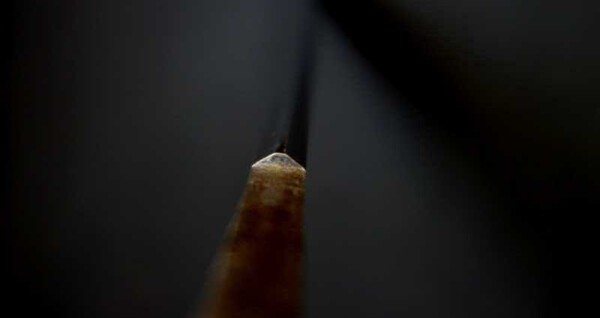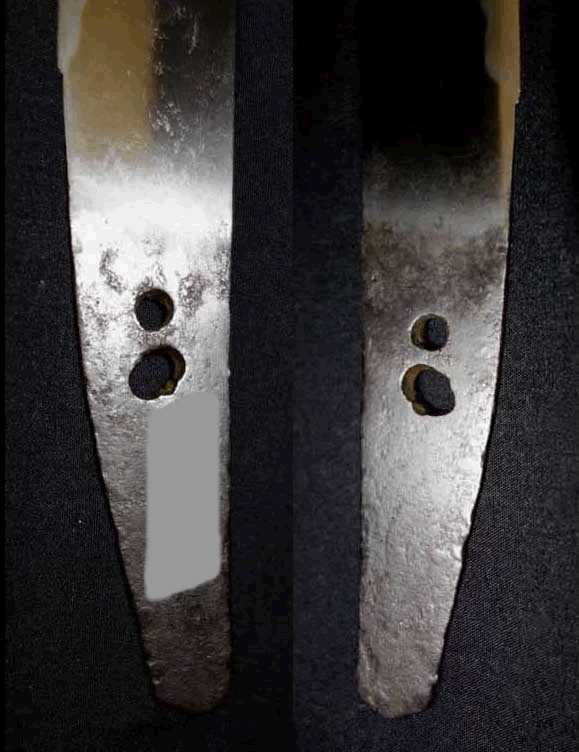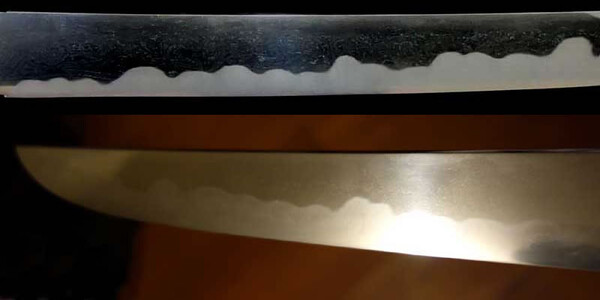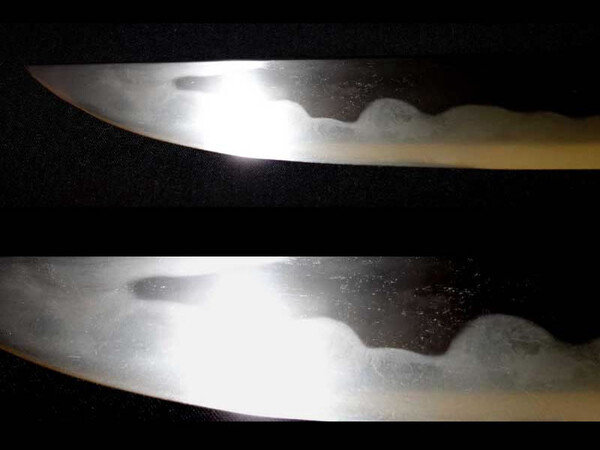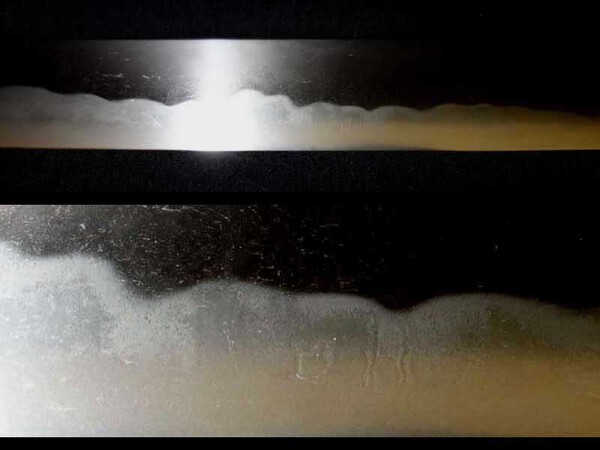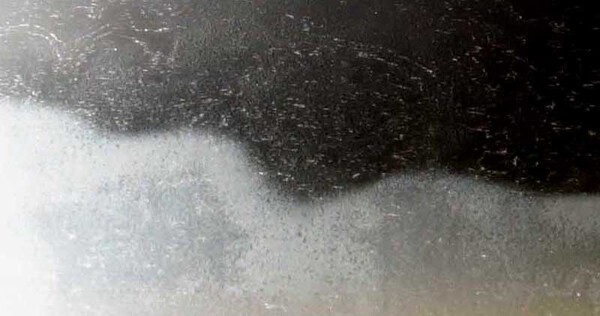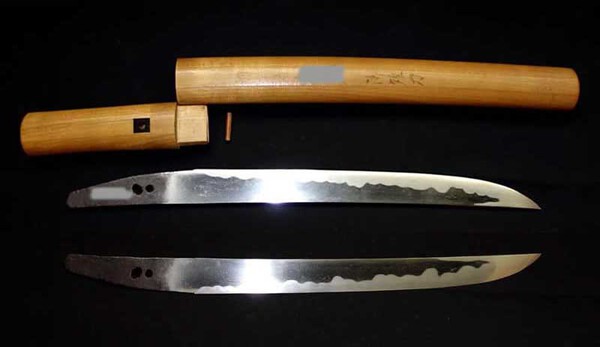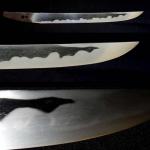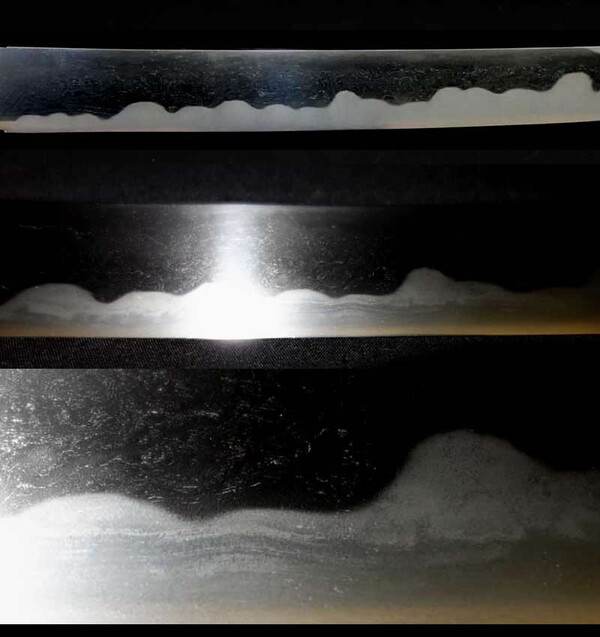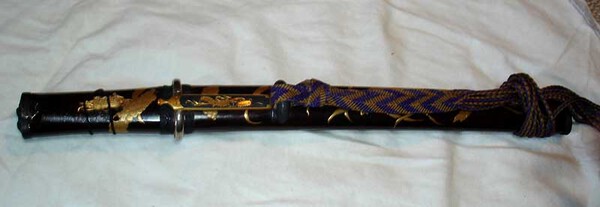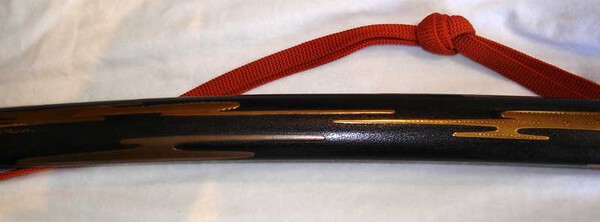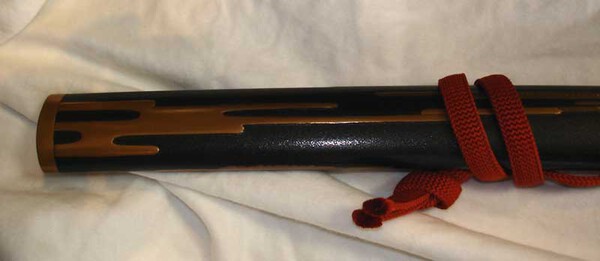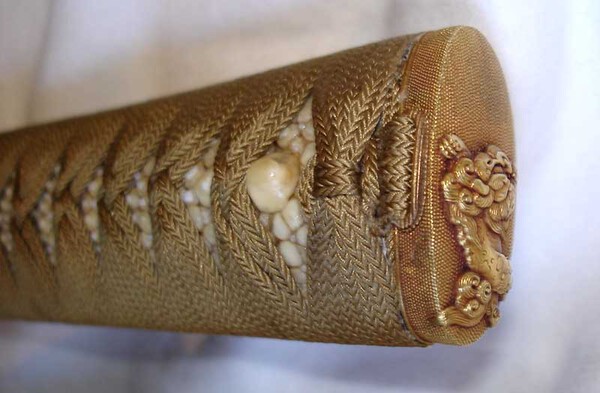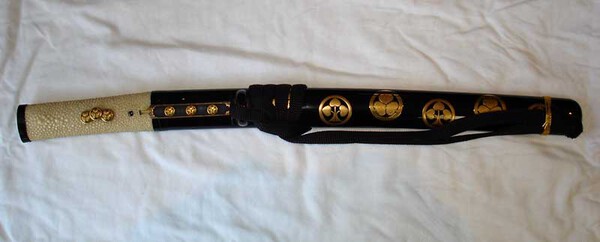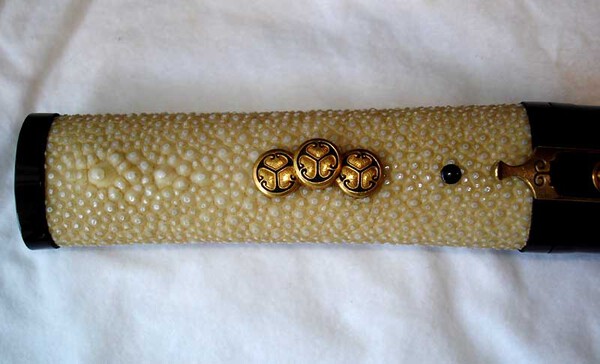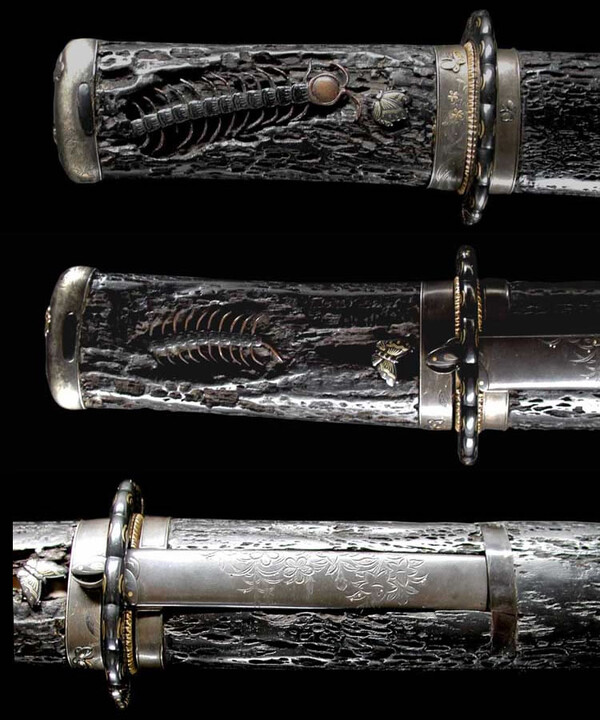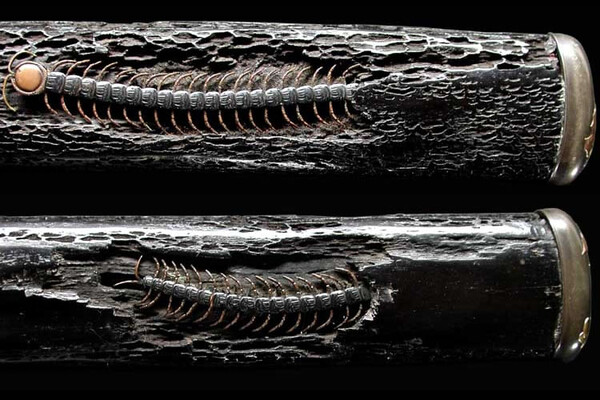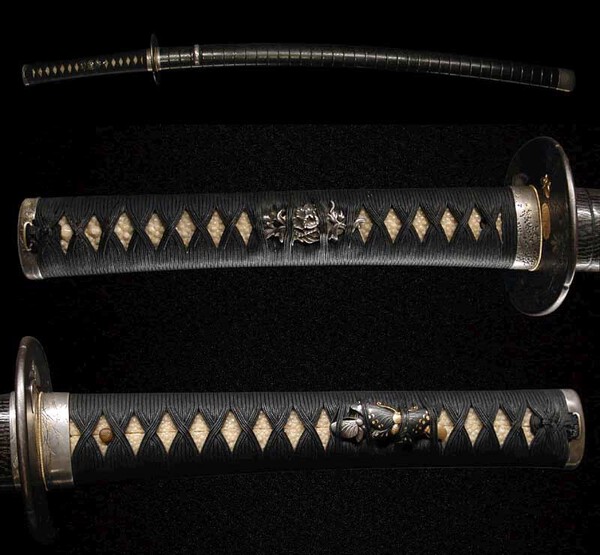-
Posts
591 -
Joined
-
Last visited
-
Days Won
11
Content Type
Profiles
Forums
Events
Store
Downloads
Gallery
Everything posted by kunitaro
-
加賀象嵌 Kaga-zogan by 加賀金工 Kaga-kinko ???
-
播磨大掾藤原重高 Harima Daijo Fujiwara Shigetaka (Ni-dai/2nd)
-
The theme is "おつるひゃら/Otsuruhyara" dance, a parts of Mikawa Hana Matsuri(flower festival). It is old Shinto winter festival in Mikawa province. They put Okame & Hyottoko mask dance with Surikogi(Pestle),Mortar and Shamoji(Rice scoop) in their hands. The pestles and rice scoops has Miso and rice on them, the dancer try to stick them at audiences. When you get rice or miso sticked on your face, you will have good luck for next year ! so, It could be made by Owari/Mikawa tsuba smith !?! (late Edo)
-
Thank you for many reply. the camera is Sony Cyber-shot RX-100. small digital compact. I have no knowledge of photo, so, I used flash light with Auto mode. took a few shot by hand (not tripod) and cut and resized, adjust (changed) contrast and darkness for showing activities of Jitetsu and showing activities in Ha. The polish is also strong Hadori, it made dark Ji and very white Ha. It is better to make Ha white to show fine activities IN Ha. and good to make dark to show activities of Ji. So, both combination of photo and polish makes hard picture….I think. I should try with photo light and tripod… also, try to shoot from angle through light like how we look at. To make Ji dark is "Nugui" process, putting "Jitekko/Kanahada and oils" on Ji to make it dark to show good Hada actives, and use Hazuya stone to make Ha part white to show fine activities in Ha, That is the concept of Hadori polish that developed by Honnami Heijuro Nariyoshi at beginning of Meiji. The sashikomi polish before Meiji period was not using "Nugui", using only Tsushima-to powder (almost Uchiko) on ji and ha, after Jizuya and hazuya stone. so, The Ji was not very dark, and Ha was not very bright. Modern Sashikomi is different, they use "Nugui" to make Ji dark and use acid to make Ha bright without using Hazuya,,, (If you use finger with stone to make hamon whiter after Nugui, you can not trace complete exact Hamon) I am not going too deep about process about modern sashikomi polish, because, I don't want to disturb some other polisher's business, or some one has secret… by photo above, you can see some Muneyaki parts on june. That is Hamon without Hadori(Hazuya stone), so, the Hamon of Sashikomi polish looks like that, It is good to see in hand by bare eyes, but, it doesn't look good on digital photos… Most of people are studying, buying and selling by photos, so, the photo must be good…also, it is important to know how to see(examine) the sword properly as well. BTW, This Tanto is not very difficult to do Kantei. It is Koto, Soshu-den, from Nanbokucho soshu to maybe Muramasa (late Mino den ?) for most of us. It is very healthy flawless blade, so it is remained most of original. Hada is very clean/smooth, ( see the last photo, it is under room light), but,when you see well,it is Mokume-Itame Hada with Jinie, and see strong chikei, near Nume also same. Near Ha become Masame. (as you see photos) Hamon is based on O-gunome midare as Hadori, but, above it, there is strong Nie-utsuri all over, some parts become more Hamon than utsuri, and irregular Muneyaki, a lot of Hataraki (strong Kinsuji) in it). when you see it good angle of light, it looks like 3D Hitatsura, I will try if I can shoot this. BTW, In the picture of closed up Hamon, Could you see Hataraki of Ashi, Yo, Sunagashi, Kinsuji and Inazuma ?
-
-
-
This post is not really for Kantei, I am trying my new camera with an old blade. Could you tell me your opinion about this blade or opinion about photos. Hamon is based on O-gunome-midare hamon and Mune-yaki, Jitetsu with Jinie, strong Nie-utsuri, it looks almost Hitatsura on Ji. I could not take photo of this Utsuri/Hitatsura on Ji, however, please let me know what you see, Tanto : Hirazukuri, Mitsu-mune, Nagasa : 26.5cm, Sori : 0.1cm, Motohaba : 2.8cm, Motokasane : 0.58cm,
-
Nakai Mitsushige is a famous merchant of Omi province in bakumatsu period. He is well known orderer of "Shoju Raigo no zu, Daisho Kanagu (Juyo Bunka zai)" published in the book "Tagane no Hana" and "Jigoku no zu Tsuba made by Otsuki Mitsuoki.
-
Kuro-urushi Zokuryu-nuri saya Uchigatana/Handachi Koshirae (* Zokuryu = bottom of chesnut) Sasayama Tokuoki Issaku Tachi style Kanagu. Ordered by Nakai Mitsushige. (18th Tokubetsu Juyo Toso) *Mitsushige made a Tanto koshirae for Komei Tennno by order in same year.
-
-
Some yes, some are already sold and some from my friend Most of them are from famous collectors or old families in Japan. (the first one, Nakagawa Issho/hashimoto Isshi Koshirae was found/bought in the Netherland about 15 years ago) However, I am not a collector, I am a dealer/researcher. so, to find right owner or good house is my duty. and I am not selling those items here, My post is to share with our members for studying. a few more..... This is Araki Tomei Issaku Tanto Koshirae, Signed Ichijo Tomei.
-
-
-
Two Uchigata Koshiraes, 1. Early Edo period Uchigatana Koshirae Gold nanako Fuchigashita, Shakudo Tsuba and Takamakie Saya. Traditional design. 2. Lete Edo period Uchigatana Koshirae Shakudo very fine Nanako fittings, Makie saya. Very modern taste..
-
-
Marius san, Normaly, Family has two crest(Mon)s, Omote-mon and Ura-mon. I think that most of Ura-mon comes from wife's family crest. and I heard that they use one omote mon presented as Han, and two mons presented as Family. They can use only Ura mon as private.
-
Proper Daimyo Aikuchi (Mon-chirashi) koshirae The shape and sharpness of line of Koiguchi is the point to examine for quality of workmanship. Koiguchi and saya is not flat, very tinny sharp gap. It must be like this. Flat or roundinsh dull line are not good.
-
Tanto Koshirae, Fittings are made from Shibuichi, Tsuka and Saya are made from Tagayasan (Iron wood?) with Mukade (Cantipede) made from Shakudo and copper. Shakudo Tsuba and Mekugi. Mumei/unsigned Bakumatsu period.
-
This is an Uchigatana Koshirae made in the end of Edo period. All original. Fuchi, Kashira, Koiguchi, Kurigata and Kojiri, Platns motief, made from silver with Kebori and gold Hira-zogan. Each pieces are signed by Nakagawa Issho, Iron Tsuba with gold,silver and shakudo Zogan, and hira-zogan. Signed (Hashimoto) Isshi, Silver and Shakudo Menuki, probably signed (unknown, maybe Ichijo !?) Saya is kind of Kebori on urushi, simulated to wood. The blade is early Shinto "Bizen Shichibeinojo Sukesada". Brand new condition with Ububa, Habaki and Seppas are also original. Many of these kind of koshiraes were separated, If Saya or Tsuka is damaged, each parts will be sold for very high price... However, this kind of "Original and Brand new condition" items are priceless....
-
Dear Morita san, I thought that it is good to know pronunciation of mei as well. But, I understand that translation should be translation, I will do your way from next time. Thank you for your advice. Best regards
-
城慶子正明鍛之 Jokeishi Masaaki kore(wo)Kita(er)u 慶応二丙寅年春二月日 Keio 2 Hinoe-Tora doshi Haru 2(ni) gatsu bi
-
馬面 序政 (花押) (鍔) Bamen Tsunemasa (Kao) (Tsuba )
-
二重巻張 (Niju Makihari) 江州 国友 九兵衛 恭峯 ( Goshû/Omi Kyubei Chika?mine or Kyoho)
-
Brian san, Yes, regular polish is Kesho polish, It is the best way to show finest activities of the blade (Ji and Ha) today. We can do traditional Shashikomi polish, It takes much more time, so, it cost 50-100% more than standard polish. Ji is not dark, and Ha is not btirght as Modern Shashikomi or Kesho polish. Daniel san, Thank you for your comment. I am very glad that you know how to examine the activities. When you take more than 5 min to stare at one place of the blade. You start to see very fine activities in the blade, that is how the polisher see it. and you understand how the polisher want to show what is in the blade. The polisher communicates with the maker(smith) by polishing, and you are communicating with the polisher. That is big part of the art appreciation.




